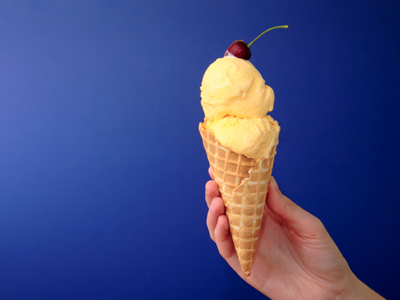
Ask the AI Tutor
Need help with Communicating Results? Ask our AI Tutor!
AI Tutor - Lucy
Connecting with Tutor...
Please wait while we establish connection

The thicker the insulating material, the longer it takes ice cream to melt.
Communicating Results
In KS5 Science, students learn how experiments are designed, carried out, and communicated clearly so others can replicate and evaluate findings with accuracy.
1 .
Which of the following would be a good title for a bar chart describing the strength of different magnets by counting how many paper clips they could hold?
How heavy are paper clips?
How strong are magnets?
Why do magnets attract paper clips?
Which magnet should you buy?
It is the strength of the magnets that is being tested
2 .
Which of the following would be a suitable conclusion to an investigation?
Woodlice like warm habitats
Woodlice like cool habitats
The more damp the habitat, the more woodlice it will have
Woodlice hate living in damp conditions
It's important to use scientific language in your conclusion
3 .
Fill in the gaps in this sentence:
The _______ the insulating material, the ______ it takes ice cream to melt.
The _______ the insulating material, the ______ it takes ice cream to melt.
thicker, longer
more, shorter
warmer, cooler
higher, thinner
The thicker the insulating material, the longer it takes ice cream to melt
4 .
How should recorded results be displayed?
In a bar chart
In a line graph
In a scatter graph
In any of the above
Different graphs and charts might be better suited to different types of results
5 .
Which of the following would be a suitable conclusion to an investigation?
Cars always make large shadows
The closer to a source of light an object is, the larger its shadow will be
Taller people make shadows
Shorter people don't make shadows
Conclusions use words like 'shorter', 'colder', 'lower', 'louder', etc. They will also show the relationship between the variable you changed and the variable you measured
6 .
The strength of different magnets could be tested by counting how many paper clips they could hold. If you were creating a bar chart to display the results, how might you label it?
The type of magnet on the x-axis; the amount of time on the y-axis
The type of magnet on the x-axis; the number of paper clips on the y-axis
The weight of the magnets on the x-axis; the length of time on the y-axis
The distance of the magnets on the x-axis; the number of paper clips on the y-axis
Time and distance were not a part of this test!
7 .
In an investigation, what are 'results'?
Measurements
Observations
Predictions
Measurements and observations
Things you see, like a change in colour, and things you can measure, like an increase in temperature, are results
8 .
The time taken to melt ice cubes wrapped in different insulating materials has been measured and these measurements recorded. How could these measurements be displayed in a bar chart?
The size of the ice cube on the x-axis; the different materials on the y-axis
The different materials on the x-axis; the time taken to melt on the y-axis
The time taken to melt on the x-axis; the size of the ice cubes on the y-axis
The different materials on the x-axis; the temperature of the ice cubes on the y-axis
In order to make sure the test would be fair, the ice cubes would all have to be the same size at the beginning
9 .
Fill in the gaps in this sentence:
The _____ the temperature of the water, the ____ sugar it dissolves.
The _____ the temperature of the water, the ____ sugar it dissolves.
smaller, most
larger, lots
higher, lots
lower, less
The lower the temperature of the water, the less sugar it dissolves
10 .
How should your measurements be recorded?
On some scraps of paper
On a mind map
In a table
It's not necessary to record your measurements
Using a table helps you to record your results accurately. Scraps of paper are not very reliable and you might forget what each number means or which measurement it is
**Unlimited Quizzes Await You! 🚀**
Hey there, quiz champ! 🌟 You've already tackled today's free questions.
Ready for more?
Ready for more?
🔓 Unlock UNLIMITED Quizzes and challenge yourself every day. But that's
not all...
not all...
🔥 As a Subscriber you can join our thrilling "Daily Streak" against other
quizzers. Try to win a coveted spot on our Hall of Fame Page.
quizzers. Try to win a coveted spot on our Hall of Fame Page.
Don't miss out! Join us now and keep the fun rolling. 🎉
**Unlimited Quizzes Await You! 🚀**
Hey there, quiz champ! 🌟 You've already tackled today's free questions. Ready for more?
🔓 Unlock UNLIMITED Quizzes and challenge yourself every day. But that's not all...
🔥 As a Subscriber you can join our thrilling "Daily Streak" against other quizzers. Try to win a coveted spot on our Hall of Fame Page.
Don't miss out! Join us now and keep the fun rolling. 🎉






